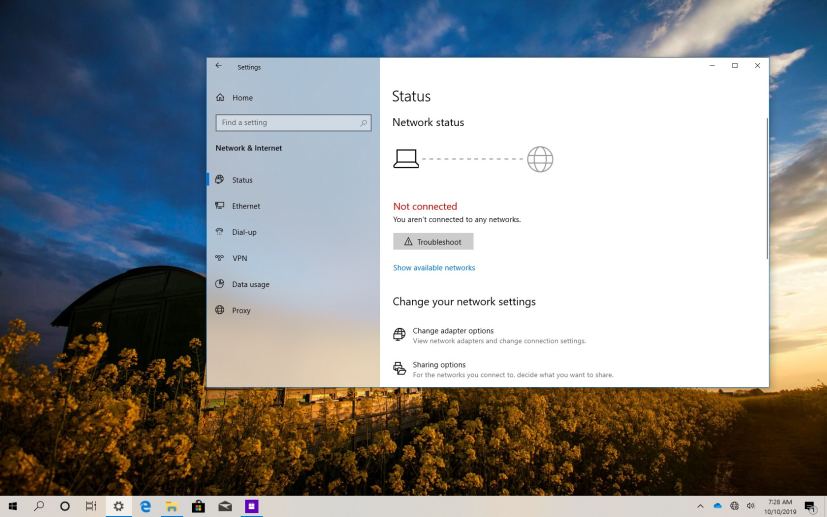
On Windows 10, Wi-Fi issues like unable to connect to a network, slow wireless speeds, missing configuration, and wireless adapter not working, seem to be among the common problems you’ll often encounter when installing a new feature update, even after installing the November 2019 Update, version 1909.
These problems usually happen because of driver compatibility, undesired configuration changes, or a particular bug, which could be as a result of system changes introduced in a new version. However, other times, there are other factors that can cause Wi-Fi problems. For instance, the network adapter driver can get damaged during the upgrade process. You don’t have the latest driver installed, which happened to work with the previous version, but it doesn’t with the new version of Windows 10. There could be some configuration problems, and a number of other things.
If you’re unable to connect to the internet, the device randomly disconnects, or speed are not adequate, there are some troubleshooting steps that you can follow to fix most Wi-Fi problems on your Windows 10 device after an upgrade.
In this guide, you’ll learn a several methods to troubleshoot and fix the Wi-Fi problems after installing the Windows 10 November 2019 Update.
- How to fix Wi-Fi using Network Adapter troubleshooter
- How to fix Wi-Fi using Network reset
- How to fix Wi-Fi using updated network driver
- How to fix Wi-Fi uninstalling Windows 10 November 2019 Update
How to fix Wi-Fi using Network Adapter troubleshooter
Windows 10 has a troubleshooting tool in the Settings app to fix most common wireless and other network adapters problems automatically.
Use these steps to use the Network Adapter troubleshooter:
-
Open Settings on Windows 10.
-
Click on Update & Security.
-
Click on Troubleshoot.
-
Select the Network Adapter option.
-
Click the Run the troubleshooter button.
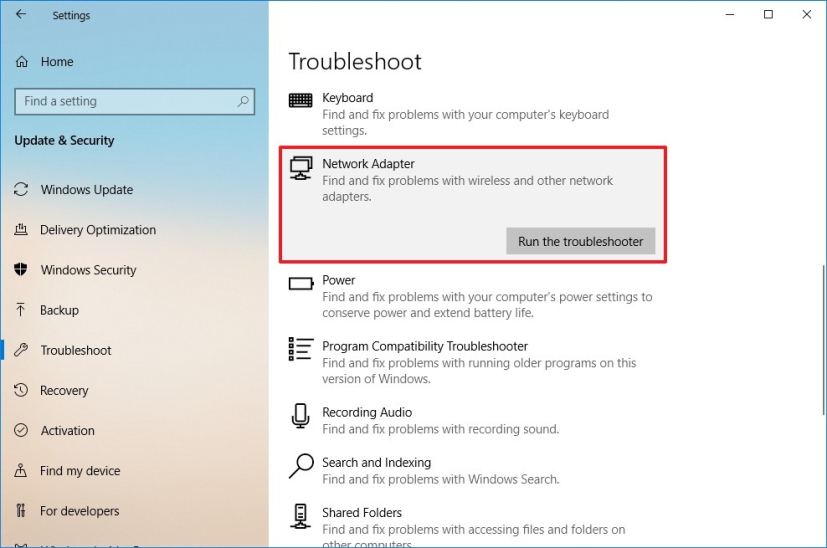
Network Adapter troubleshooter -
Select the network adapter you’re intending to fix — for instance, Wi-Fi.
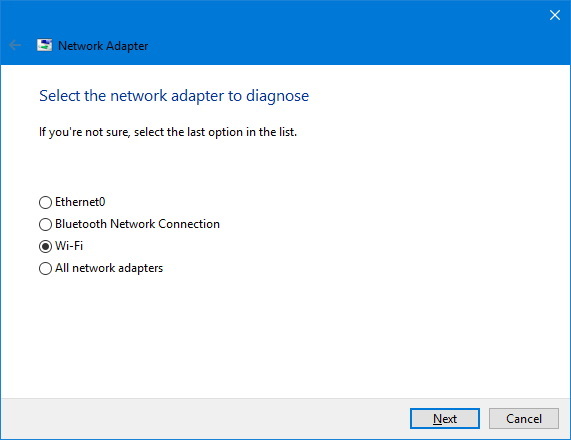
Network Adapter wizard -
Click the Next button.
Once you complete the steps, the troubleshooter will detect and fix the Wi-Fi problem on your device. After the process completes, open your web browser and try to connect online. If everything is working again, you’re all done. If it’s still not working, try the following method.
How to fix Wi-Fi using network adapter reset
If the troubleshooter didn’t work, you can use the network reset feature that removes and reinstalls all the network adapters on your computer. This process resets all the networking components and restores the defaults settings, which can help to fix slow speeds or other problems trying to connect to the internet.
Use these steps to reset your Wi-Fi adapter on Windows 10 after installing the November 2019 Update:
-
Open Settings.
-
Click on Network & Internet.
-
Click on Status.
-
Click the Network reset link.
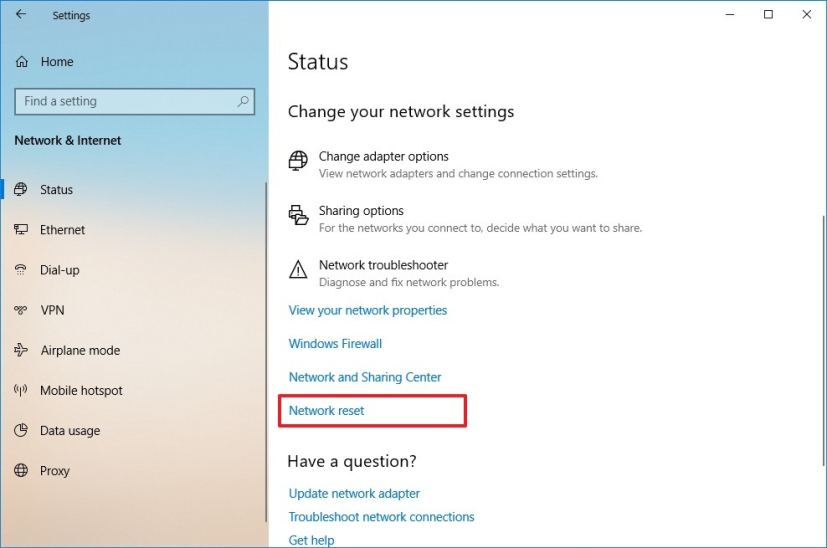
Network reset option on Windows 10 -
Click the Reset now button.
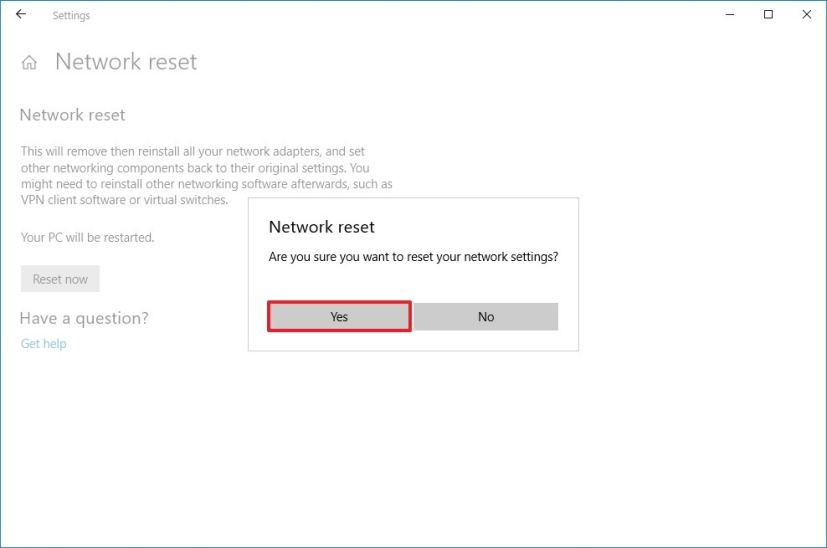
Windows 10 network reset -
Click Yes to confirm.
-
Click the Close button.
-
Restart your computer.
After completing the steps, you may need to reinstall other networking software, including VPN client or virtual switch software. In addition, you’ll need to manually reconnect to any wireless network, which may require to enter the passcode again.
You can also watch the video tutorial below to see in more details, the steps to fix a wireless adapter on Windows 10.
If everything is working again, you’re all done. If it’s still not working, try the following method.
How to fix Wi-Fi updating network adapter driver
In the case that you’re still noticing slow Wi-Fi speeds, or problems connecting to the internet, the issue could be an outdated network driver.
You can resolve this issue downloading and installing the latest driver from the network adapter manufacturer’s support website.
Use these steps to update the wireless adapter driver on Windows 10:
-
Open Start.
-
Search for Device Manager, click the top result to open the app.
-
Expand the Network adapters branch.
-
Right-click your Wi-Fi adapter, and select the Update Driver Software option.
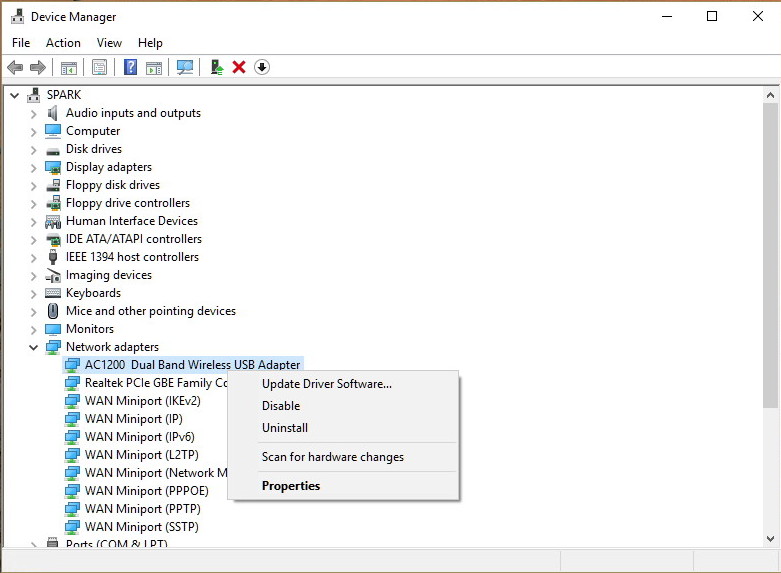
-
Click the Browse my computer for driver software option.
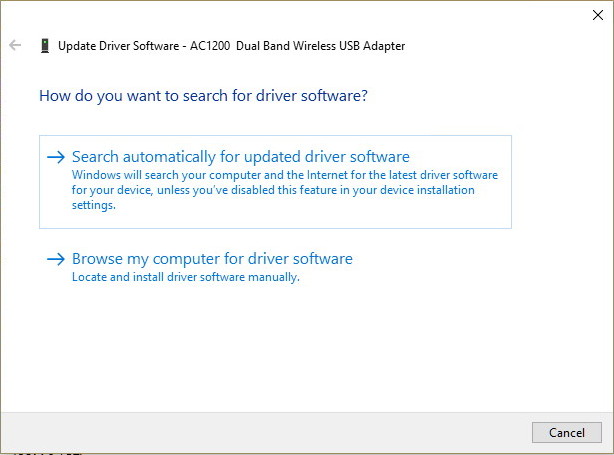
-
Click the Browse option to locate the adapter driver.
-
Check the Include subfolder option.
-
Click the Next button.
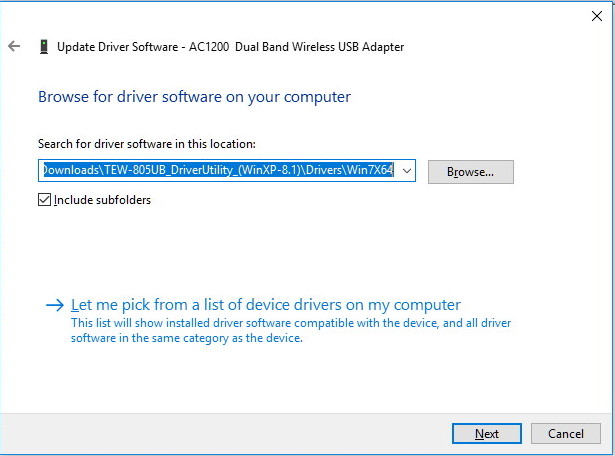
Once you complete the steps, you should be able to connect to the wireless network and to the internet.
If nothing seems to work, sometimes, you can also try an older version of the Wi-Fi adapter driver, such as those designed for Windows 8.1 or Windows 7, which might fix the problem temporarily until there is a permanent fix.
How to fix Wi-Fi uninstalling Windows 10 November 2019 Update
In the rare case that you’re still having wireless connectivity problems, then there’s a good chance that the issue is a bug with the Windows 10 November 2019 Update, and you may need to wait until an update becomes available to fix the problem.
If you can’t wait, as a last resort, you can go back to the previous version of Windows 10 until the Wi-Fi problem is resolved, which you can do using this video walkthrough:
In the case that you upgrade from version 1903 to Windows 10 version 1909, then you’ll need to follow these steps to roll back to the previous version.
Alongside all these instructions, it’s a good idea to check your adapter settings on Control Panel > Network and Internet > Network Connections, and opening the adapter’s properties. In the past, there have been reports about TCP settings getting disabled and DNS settings getting reset after an upgrade. In addition, you should always reboot your router to see if it helps to resolve the Wi-Fi slow speed or connectivity problems.
While we’re focusing this guide on Windows 10 version 1909, you can use these steps virtually on any supported version of the operating system to resolve networking problems.
Alternatively, you can also connect online using a wired connection using an Ethernet adapter. If your laptop doesn’t include a port to plug a network cable, you can get an adapter from Amazon.
